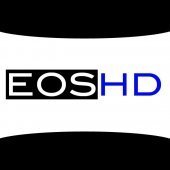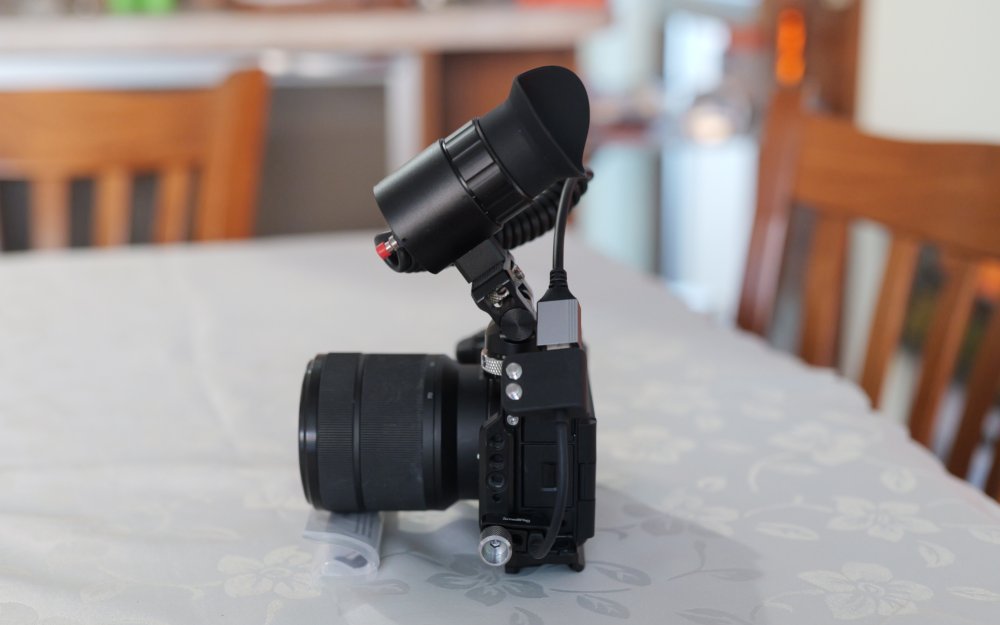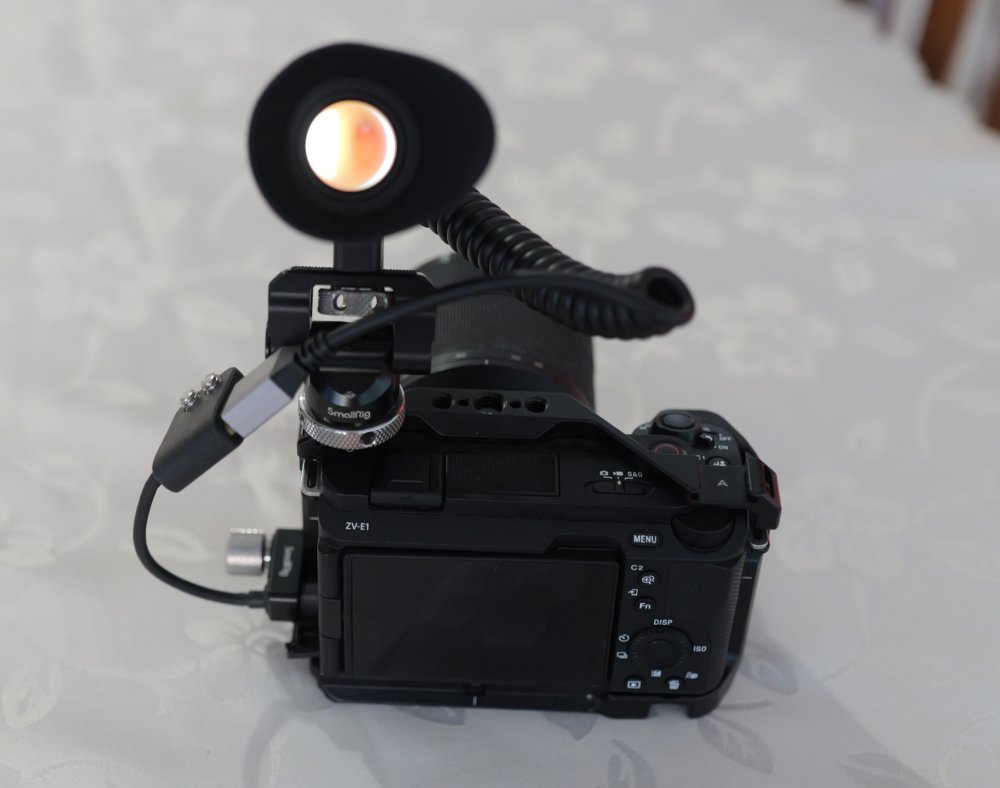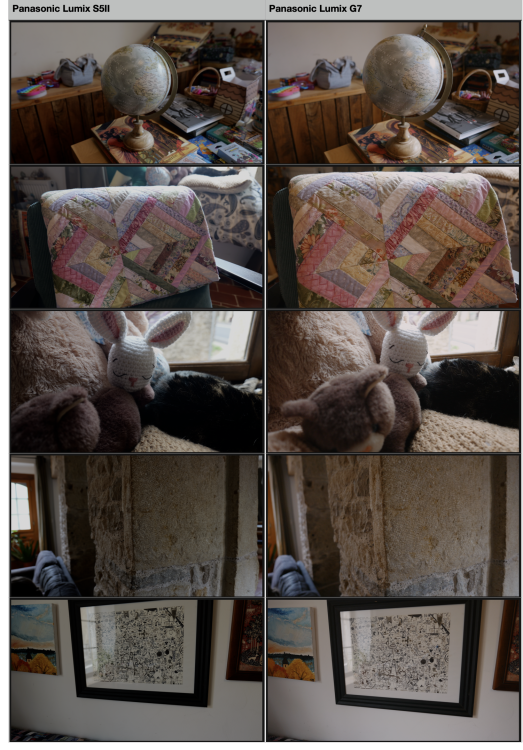Leaderboard
Popular Content
Showing content with the highest reputation on 05/26/2025 in all areas
-

I want Advice on Choosing Between the Fuji X-S20 & Sony FX30 for Video Work
Emanuel and 3 others reacted to Benjamin Hilton for a topic
Having used both professionally, I'd go FX30 all day. The XS-20 is a fun photography camera, that does video pretty well too. It's just not quite up for pro level work in my opinion. The image is really good, the size is fun, and the color is pretty good too. It's kind of fiddly though, lacks a good selection of custom buttons, overheats a lot, struggles with autofocus a bit and has the SD card in the battery compartment, which is something I personally don't enjoy. While not being maybe "as fun" as the XS-20, the FX30 is more of a workhorse. Decent color, duel native ISOs, integrated Sony cinema features, solid autofocus, good cooling, easily riggable form factor and the list goes on. The major con is lack of a EVF, but I rarely use built in EVFs, so that doesn't bother me. Basically if I'm choosing a family camera for stills and some video, I'd go the XS-20. For professional video work, the FX30 is a much more reliable choice.4 points -
I want Advice on Choosing Between the Fuji X-S20 & Sony FX30 for Video Work
Emanuel and one other reacted to eatstoomuchjam for a topic
"Best" is pretty subjective. If autofocus is the main thing that you want, then Sony's is the industry leader, followed closely by Canon. Fuji's has been mostly OK for me, but it definitely doesn't seem as magic as Sony/Canon. Most of the other stuff is going to be a matter of personal opinion. If you have a local camera shop and they sell both, your best bet is to go try both of them in person. But both cameras are going to be completely usable for vlogging, interviews, event coverage, or whatever else you want to do. They're both very nice and with much better specs than what a lot of us were using as high-end cameras 10 years ago.2 points -
I think Fuji missed a trick here anyway and should only have half announced this camera.2 points
-

Panasonic Lumix G7 vs. S5II, used as camcorders
BTM_Pix and one other reacted to John Matthews for a topic
Here's the original video. Of course, this is for testing purposes only as I don't usually shoot like this. I just wanted to see how stable I could make the G7 and see how fast it could reacquire focus once in a settled position. What I learned is the smaller you make the AF box, the faster continuous will reacquire focus. I just went from subject to subject, placing the framing where the focus point was. I doubt the footage of my Panasonic VX980 would have been better, just WAY noisier.2 points -
Surprisingly good and afordable external HDMI EVF
John Matthews reacted to stephen for a topic
Recently saw a second hand Sony ZV-E1 on a local online market place. Price was good and I bought it. Great video camera but lacks EVF. Same is true for it's pro oriented brother FX3. Typically those type of cameras are used with external monitor on professional shoots or with camera LCD display only when vlogging. If you like EVFs and want to add one, choice is not great. No external add-on EVF from Sony like the one Sigma FP has. Portkeys LEYE III modified with better loupe is the cheapest one at 450-500 E/$ but I wouldn't call it small. Then Kinefinity EVF for 1250 E/$. Great one but definitely not affordable. There is an obvious gap and need for a relatively small, high quality, affordable external EVFs for cinema / hybrid cameras. I was looking for quite some time on AliExpress for Mini OLED displays (0.39'' to 0.7'') as a building blocks for DIY External EVF. Usually they come with controller board with HDMI input too. Almost bought some components preparing to do some 3D design and printing around them. Surprisingly found an EVF ready to be used. This type of EVFs were designed to be used with industrial instruments and were on AliExpress for quite some time. They all had lower resolution and AV video inputs in the past. For the first time saw one with 1920x1080 resolution on a 0.7'' mini OLED display and HDMI input. Also for the first time this type of EVFs is targeted toward cameras. Price was good too at 230E/$ so I decided to give it a try. Received the EVF few days ago and am happy to report that it is better than expected. Here is the list of things that I like and few that I don't like: What I Like: High resolution 1920x1080 ( equivalent to 6 220 800 dot camera EVF). Cameras EVFs have 4:3 ratio to cover 3:2 frame + some black strips on top and bottom to display information like exposure and other camera settings. The sensor on this one has 16:9 aspect ratio. To get 3:2 ratio the EVF crops the image to 1620x1080. Still great resolution at the level of ~5 mln dots EVFs like the one in Panasonic S1 series. I see in the EVF exactly what I see on the LCD screen of Sony ZV-E1 minus peaking. This is a rather good thing. Solid, all metal outer shell, good, even great quality of craftsmanship. Eye cup is big, made from rubber and fits around the eye much better than traditional camera EVFs. Big and bright screen - has at least 10 levels of brightness that can be changed and controlled manually. Picture inside looks big and bright, quite easy to see. Smooth focusing / diopter correction ring. HDMI cable is integrated, ready to be plugged into a camera. HDMI cable looks to have good quality. No need of additional power or battery. It gets small amount of power (500mA) from HDMI. This is a huge plus for me. Has mounting thread, can easily be mounted on rigs or cages or even on camera hot shoe. Can be tilted and placed in any position you want. Another huge plus. I've simply put it on monitor holder for hot shoe, which is mounted on the camera cage. EVF sits higher and is slightly tilted. It also provides 3rd point of contact and add stability. I am able to hold the camera lower and closer to the chest, which makes it more stable when shooting. Optimal size for me ! Not too small and not too big. Relatively light. Another huge plus. Optics made of glass, look high quality. Great price for what it offers - 200 Euro ($) including shipping and taxes after some Aliexpress discount. Because EVF receives its power from HDMI you don't have to switch it on separately. It has its own ON/OFF switch but if you stop the camera, EVF stops too as it doesn't receive power from HDMI. This is very convenient because it semi integrates with the camera, you don't have to switch it on/off separately. What could be better: While loupe (optics) craftsmanship is high quality, optical schema is probably not the best. Seeing tower end of the frame and in the corners is kind of difficult. In photo mode EVF has to show picture with 3:2 ratio. It crops the display at 1620x1080 to achieve this ratio. Same is true for video. This is great because this way corners of the OLED display are always cropped and dark while picture in the EVF is still high quality and resolution is still great too. So you always look at a picture which is in focus from end to end and you can see the whole of it. Brightness control has many steps but goes only in one direction. Adjusting it when you want to make picture darker or go at the opposite direction is difficult. You have to cycle trough all settings value until arriving before the setting you were a moment ago. Brightness control button is too small and uncomfortable to use. Both are not huge issues because eye cup completely isolates your eye and cuts external light at almost 100%. Once you set the brightness level you rarely need to adjust it. It doesn't have the additional tools a pro external viewfinder usually has - like peaking, False color, zebras, etc. Because it takes power from camera and becomes additional consumer, battery is drained a little faster. Hard to say how much faster. I still prefer this compared to EVF that have their own battery. Picture is not as clear as in a high quality camera viewfinder. Native camera EVF receives video stream that already has noise reduced. Image on HDMI out from the camera is more like RAW video, lots of noise in the shadows at high ISO, some noise even at lower ISO. I guess the same would be with any external EVF, even expensive PRO ones. It's not EVF's fault. I also see sometimes some texture like noise, not sure because of this particular OLED display or because of the HDMI out stream. Overall picture quality is not up to what you see in a camera integrated EVF but it is close. Surprisingly noise in the shadows helps me better judge exposure and use successfully ETTR. I live in a PAL region but camera was set to NTSC to have 24fps. There was a lot of flicker in EVF image even when only natural (sun) light was available. Maybe this can be avoided with some additional camera settings. No such problem when camera is set to PAL and 25fps. Sometimes when adjusting brightness, EVF looses sync and doesn't display any image. Have to switch camera on/off one time and problem is resolved. Not a big deal but it happened once or twice. HDMI cable is integrated. A PRO EVF has just HDMI out socket and you can choose your own HDMI cable. This one can be easily modified IMHO. Size: L=~50mm; Diameter ~43mm; weight 188g with the integrated HDMI cable Overall I like it a lot. There is nothing like it on the market and especially at this price point. I am surprised it took Chinese manufactures so long to figure out that a good market for external EVFs exists. I prefer it over modified Portkey LEYE III because of the smaller size and no need to plug and charge another battery. I may buy another one. 🙂 Now my Sony ZV-E1 has an EVF and a great one too. 🙂 Here is the link: On Aliexpress You can find it on ebay too. Search for V780H EVF Here how it sits on top of Sony ZV-E11 point -

Panasonic Lumix G7 vs. S5II, used as camcorders
sanveer reacted to John Matthews for a topic
People might laugh at me, but I don't care. I've been doing some walk-around filming with my G7 and 9mm Leica versus my S5ii and the kit lens. I'm absolutely dumbfounded how little the differences are. Here are my settings: Panasonic Lumix G7 - 4k 25fps (EOSHD ProColor Settings, with minor tweaks), super-fast stabilization in Final Cut (InertiaCam- smoothing (.1), continuous video AF on with it's small box in the center (yes, that's right and it didn't really hunt), A Mode, Auto ISO, handheld only, AWB Panasonic Lumix S5II - 4k 25fps (Stadard profile), no stabilization in post (but had IBIS on), continuous AF (mode 2), small box in the center, A Mode, Auto ISO, handheld only, AWB I kid you not, the images were very similar, minus the color which seemed better on the G7 to my eye. After stabilization, there was little difference. Here are some stills: It would appear the 2015 G7 is still the little engine that could. It weighs a whopping 540g less than the S5II and kit lens. I could add the 14-140, the 25 f/1.4 and perhaps a recorder or mini tripod for that difference. This is where M43 needs to go in the future: small, excellent value, with great features like 4k, PDAF, IBIS, 10 bit h.265, with a proper shutter and hot shoe. Even the previous generation(s) from 2015-2018 have so much to offer.1 point -
Photography has always been an expensive hobby. Since the SLR days there has been a clear mark of status associated with the best gear from the best brands. Wanting the best implied paying a lot more. Camera companies have clearly segmented and re-segmented the "intent" you mentioned. Want the best hybrid video-cam with RF lens? Better pony-up for the R1, R3, R5M2 or R5c. Want the speed demon? There's your R7. Want a slow full-framer but with some limitations for video, as in no IBIS? Here you go with the R8. A considerably better camera and videocamera but no as expensive as the R1 and upper tier? Ahh, we've got your R6M2. Every company out there does the exact same thing. So even if you are NOT looking for status, it's implied by your choice of gear. The only way to eschew the game is by going full retro. And I mean really retro for gear NOBODY wants to use and can't even be used with modern computers easily. I'm looking at you MiniDV, Hi8, and such.1 point
-
Panasonic Lumix G7 vs. S5II, used as camcorders
BTM_Pix reacted to TrueIndigo for a topic
I still have my G7 -- I got rid of my GH1, nice though it was back in the day, but kept this little camera; the simplicity of using it remains an attraction. This was my first camera test with it:1 point -
If you hover over the link it shows up as two colours. the front part looks legit, the middle will probably take you off site if you click on it, the end appear legit. It does look a bit sus from what little i know of such things.1 point
-
Note the link embedded in the first post is partly fake, so I assume it's a scam post from a new user.1 point
-

Panasonic Lumix G7 vs. S5II, used as camcorders
eatstoomuchjam reacted to MrSMW for a topic
And do, but mostly because I think the footage just looks better than the 4k. My A7RV will shoot 8k but never even tried video on it. Or my Nikon, even though the 4k out of the Zf is supposed to be pretty good.1 point -

Panasonic Lumix G7 vs. S5II, used as camcorders
sanveer reacted to Andrew Reid for a topic
EOSHD ProColor looking great 😉 Much nicer than the Panasonic profile on the S5 II1 point -

Fujifilm X-Half Officially Announced
andrgl reacted to Marcio Kabke Pinheiro for a topic
This camera is not made for us - is for the youngsters that are getting old P&S cameras to experiment something different. If fact, Fuji marketing strategy should be: reach the Tiktokers that created the X100 V and VI frenzy and drop a shitload of money to make this become viral. Saw some reviews, there are some very lovely things there and a ton of likely mistakes - but as I said, we are not the target group. - Video: forget, is crap. Less than FHD resolution, bad AF, 30 seconds max. A lost opportunity, goodish video with the film sims would be great. - Camera is VERY cute and small, but at the same time could have some more "details", have some toyish vibe. - The interface is very simplistic (kinda a cross of the digital Instax cameras and the current Fujifim menus). The use of the left display for the menu item and the bigger for the itens is intriguing. - The diptych idea is very neat, but as some reviews said, easier to do in the app instead of doinf it in camera. - The "film mode" is VERY gimmicky, but could have some traction. Again, the target group will have the veridict. Biggest problems in my point of view: - Flash photography is a VERY big use case of the youngsters getting old cameras. They love it. And this camera could NOT use any flash - the camera have a led instead of a flash, and a cold shoe without any connection. Huge mistake - if they don't want to put a proper integrated flash, at least could provide a center pin in the shoe to put an external manual flash. And since the camera is so bad for video and don't have a mic port, don't know how to use this dumb shoe for anything. - The rear display is very small - and since the younger people probably will use it a lot, could be a problem. In fact, when the rumors started, I said that Fuji should go full Instax mode, making the camera to be designed "vertically". But this would not bring the retro vibes. - OVF looks good, but have zero infos. Could have some displayed settings. Biggest problem: the price. A camera with no EVF, very basic AF, with a very small main LCD, very few buttons, no integrated flash, a coldshoe, very basic video, for $850? You can just get a X100T or X100S used for the same price, and is a miles better camera. I know that it is a "experience" and fun camera, but it should cost much less, around $600. The X-M5 with kit lens is just a tad more. Don't know if the "experience" with this price will get traction. Hope it does - at least is something different.1 point -
Few additional findings and notes: Tested it in bright sunlight conditions. It is great. Fully isolates the eye. Because it perfectly isolates the eye from external light, once brightness is adjusted there is no need to change it. Optics actually are better than thought initially. It has several lenses not just one loupe. Most likely metal housing was designed and used for smaller sensors - 0.5''. Current one is bigger at 0.7'' that's why far end corners aren't perfectly visible. I saw this only when was feeding it with signal from my laptop. When shooting with Sony ZV-E1 as already mentioned it displays a 3:2 crop at 1620x1080px and everything is perfectly visible and in focus. one relatively simple modification would be to cut the current cable and solder a female HDMI and probably glue it to the side of the EVF. This would allow to use better or custom HDMI cables. size is just perfect for cameras like Sony ZV-E1 and all other mirrorless cameras, especially when you don't want to use a rig and have just the camera and a lens, probably also a cage as it is in my case. Nice experience. Makes shooting with an EVF really comfortable. The more I use it, the more I like it 😀1 point
-
Cam Mackey hears your call to action and is now working on it.1 point
-
Hey everyone, I am exploring options for a new camera & want to hear your thoughts. I am leaning towards either the Fuji X-S20 or the Sony FX30 but I am torn between the two. The Fuji X-S20 seems such as a solid choice with its compact size and user-friendly interface. Plus; I have heard great things about its color science and image quality. want to know if the autofocus performance & video capabilities match up to the Sony FX30. On the other hand, the Sony FX30 is known for its robust video features and reliable autofocus, which are crucial for my work But I am wondering if its larger form factor & price point are justified compared to the Fuji. Also i have check this https://www.eoshd.com/comments/topic/75314-a6700-ariba-trainingfx30-sensor-👀/page/6/ still need your advice Has anyone here used both or have experience with either? I appreciate any insights on their real-world performance for video-centric tasks such as vlogging, interviews & event coverage. Thank you.....:)0 points



